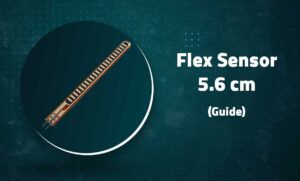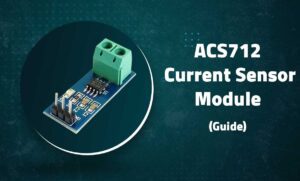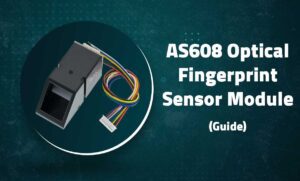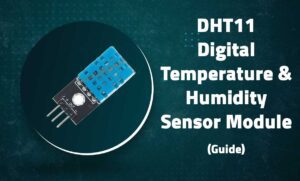MG90S Mini Digital 180° Servo
MG90S Mini Digital 180° Servo
Metal Gear, 2.2kg·cm Torque for RC and Robotics
Introduction
The MG90S is a compact digital servo featuring metal gears that provides 2.2kg·cm of torque at 4.8V. With 180° rotation and precise digital control, it’s ideal for RC models, robotics, and automation projects requiring reliable angular positioning.
 Key Features
Key Features
Metal Gears
Durable all-metal gear train
High Torque
2.2kg·cm (4.8V) / 2.4kg·cm (6V)
Digital Control
Faster response than analog servos
Compact Size
22.8×12.2×28.5mm (W×H×D)
Technical Specifications
| Operating Voltage | 4.8V – 6.0V DC |
|---|---|
| Rotation Angle | 180° (±90° from center) |
| Stall Torque | 2.2kg·cm (4.8V), 2.4kg·cm (6V) |
| Operating Speed | 0.10s/60° (4.8V), 0.08s/60° (6V) |
| Gear Type | Full metal gears |
| Control Signal | PWM (50Hz, 900-2100μs pulse) |
| Current Draw | 100-250mA (operating), 5mA (idle) |
| Weight | 13.4g |
Pin Configuration

| Wire Color | Function | Arduino Connection |
|---|---|---|
| Brown | Ground | GND |
| Red | Power (4.8V-6V) | 5V (with current limit) |
| Orange/Yellow | Signal | D9 (PWM pin) |
Note: For multiple servos, use a separate power supply with common ground
Wiring with Arduino
// Basic Connections: // Brown → GND // Red → 5V (for testing) or external 5V-6V supply // Orange → D9 (PWM pin) // For multiple servos: // - Use external power supply (5V-6V) // - Connect all grounds together // - Use servo library with different PWM pins
Important: Arduino’s 5V regulator may overheat with multiple servos – use external power for more than 1-2 servos
Basic Control Example
// MG90S Servo Basic Example
#include <Servo.h>
Servo myservo;
const int servoPin = 9;
void setup() {
myservo.attach(servoPin);
}
void loop() {
// Move to 0° position
myservo.write(0);
delay(1000);
// Move to 90° position (center)
myservo.write(90);
delay(1000);
// Move to 180° position
myservo.write(180);
delay(1000);
}
Advanced Features
Precise Microsecond Control
// More precise control with microseconds
void setAngle(int angle) {
int pulseWidth = map(angle, 0, 180, 500, 2500);
myservo.writeMicroseconds(pulseWidth);
}
// MG90S typically uses 900-2100μs rangeSmooth Movement
// Smooth transition between positions
void smoothMove(int start, int end, int speed) {
for (int pos = start; pos <= end; pos += 1) {
myservo.write(pos);
delay(speed);
}
}Multiple Servos
// Control multiple servos
Servo servo1, servo2;
void setup() {
servo1.attach(9);
servo2.attach(10);
}
void loop() {
servo1.write(45);
servo2.write(135);
delay(1000);
}External Power
// Proper external power wiring:
// 1. Connect servo power to external supply (5V-6V)
// 2. Connect Arduino GND to external supply GND
// 3. Only connect signal wire to Arduino
// 4. Add capacitor (100-1000μF) across power linesTroubleshooting
Servo Not Moving
- Check power supply (4.8V minimum)
- Verify all connections
- Ensure PWM signal is correct (900-2100μs)
Jittery Movement
- Add decoupling capacitor near servo
- Use stable power supply
- Check for mechanical binding
Overheating
- Reduce load on servo
- Avoid continuous stall condition
- Check for proper voltage (not exceeding 6V)
Related Posts
XKC-Y25-V Non-Contact Water Liquid Level Sensor
XKC-Y25-V Non-Contact Water Liquid Level Sensor
Capacitive Detection Without Physical Contact
Introduction
The XKC-Y...
Waterproof Ultrasonic Obstacle Sensor, Sensor with Separate Probe
+
Waterproof Ultrasonic Obstacle Sensor
Distance Measurement with Separate Waterproof Probe
Introduction
The Wa...
Water Level Depth Detection Sensor
Water Level Depth Detection Sensor
Liquid Measurement for Arduino and IoT Projects
Introduction
The Water Level Dept...
VL53L0X Purple Laser Distance Sensor Module
VL53L0X Laser Distance Sensor Module
High-Speed, High-Precision Time-of-Flight Distance Measurement
Introduction
The...
TCS34725 RGB Color Sensor Module
TCS34725 RGB Color Sensor Module
High-Accuracy Digital Color Detection with IR Filter
Introduction
The TCS34725 is a...
TCS3200 Color Sensor Module
TCS3200 Color Sensor Module
Precise RGB Color Detection for Arduino and Embedded Projects
Introduction
The TCS3200 C...
PN532 NFC RFID Read/Write Module V3 Kit
PN532 NFC RFID Read/Write Module V3 Kit
Advanced Near Field Communication for Arduino and Embedded Systems
Introducti...
HC-SR501 PIR Motion Sensor Module
HC-SR501 PIR Motion Sensor Module
Passive Infrared Detection for Security and Automation Projects
Introduction
The H...
Flex Sensor 5.6 cm (Detect Bending Motion)
Flex Sensor 5.6cm
Bend Detection Sensor for Arduino and Wearable Electronics Projects
Introduction
The 5.6cm...
ACS712 Current Sensor Module
ACS712 5A Current Sensor Module
Hall-Effect Based AC/DC Current Measurement for Arduino Projects
Introduction
The AC...
AS608 Optical Fingerprint Sensor Module
AS608 Optical Fingerprint Sensor Module
High-Precision Biometric Recognition for Arduino and Microcontroller Projects
...
DHT11 Temperature and Humidity Sensor Module
DHT11 Temperature & Humidity Sensor
Basic Environmental Sensing with Status LED for Arduino Projects
Introduction...







Recent Comments